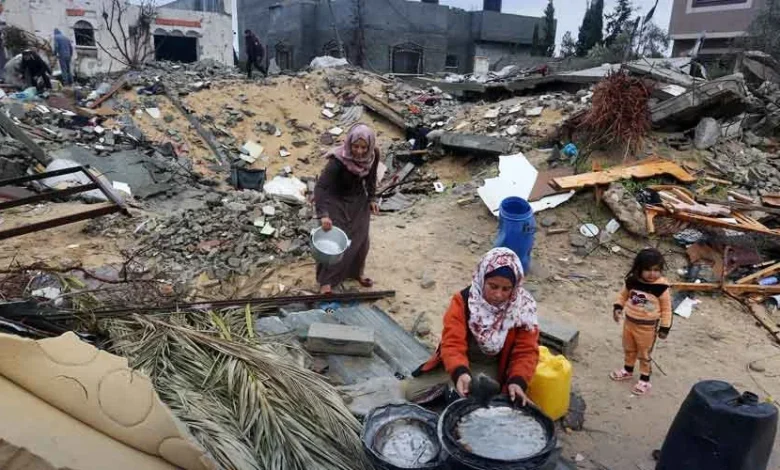A UN expert cautions that it will take generations for Gaza to rebuild.

As hundreds of Palestinians return to what is left of their homes following Israeli forces’ withdrawal under a recent truce, a United Nations expert has cautioned that the extent of the damage in northern Gaza is so extensive that repair will take “generations.”
When displaced Palestinians return to northern Gaza, they find “nothing but rubble,” according to UN special rapporteur on the right to appropriate housing Balakrishnan Rajagopal.
“People are returning to northern Gaza right now, and we are witnessing the profound psychological impacts and trauma,” Rajagopal told Al Jazeera on Saturday.
He urged Israel to permit the transport of tents and caravans to the area right away, stating that survivors must endure intolerable humanitarian conditions in the absence of shelter.
92% of the residential buildings in Gaza were damaged.
Nearly 92% of Gaza’s residential buildings have either been damaged or completely destroyed since the conflict started, according to UN assessments.
Basic essentials like electricity and potable water are still in short supply, and hundreds of thousands of Palestinians who have been displaced still live in tents and temporary shelters.
According to Rajagopal, Israel’s stringent embargo prevented “almost none” of the temporary shelters that were meant to enter Gaza during a ceasefire earlier this year.
“Until Israel ceases to control all the entry points, even immediate relief and aid to the people of Gaza will not be possible.” That is crucial,” he stated.
“Domicide” and chronic trauma
The extensive home demolition, which Rajagopal referred to as “domicide”—the wilful destruction of housing—is a key component of Israel’s plan to make a significant portion of Gaza uninhabitable.
He stated that the process of rebuilding will take generations and that “one of the main ways the act of genocide has been committed is the destruction of homes and clearing people from the area and making the area uninhabitable.”
International criticism of the two-year conflict, which has resulted in the displacement of millions of people and the destruction of Gaza’s infrastructure, is still ongoing due to the suffering of civilians and the breakdown of fundamental living circumstances.
Amidst the ceasefire, thousands return.
Following the withdrawal of Israeli forces on Friday as part of a ceasefire agreement between Israel and Hamas mediated by regional powers, tens of thousands of Palestinians have been returning to northern Gaza.
Those who return, however, encounter terrifying scenes: entire neighbourhoods turned to dust, roads rendered impassable, and no quick access to assistance or medical attention.
In Gaza City, a local volunteer stated, “People are going back to nothing — no homes, no schools, no hospitals.” “Life seems to have been eradicated here.”
Many have compared the devastation and displacement to the Nakba (catastrophe) of 1948, when hundreds of thousands of Palestinians were evicted from their homes as part of the establishment of Israel.
Even with consistent foreign assistance, the UN and humanitarian organisations caution that reconstruction efforts could take decades because so much of Gaza’s infrastructure has been destroyed.